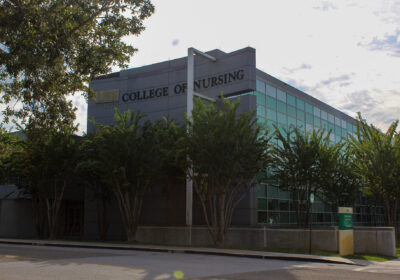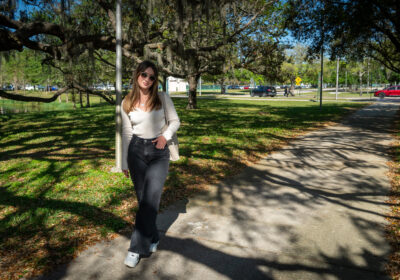Target pedestrian violators
In the U.S. last year, 4,092 pedestrians were killed and another 59,000 injured in crashes involving motor vehicles, according to the National Highway Traffic Safety Administration.
USF saw numerous accidents this semester with many involving pedestrians. A proactive solution is necessary for campus safety, and is already being implemented effectively by the St. Petersburg Police Department, which has begun a campaign to target violations of pedestrian traffic laws – a major contributor to pedestrian accidents – in the coming weeks.
Officers are targeting jaywalkers and other pedestrian traffic violations that often go unpunished. Many violators who were caught did so within plain sight of the officers, illustrating the lack of respect given to these laws.
“I wasn’t watching where I was going, and I almost got hit by a … truck,” said Will Cason to the Tampa Tribune, as he received a citation last week. “If you obey the law, you’re all right. You walk across the street when there’s traffic and they have a green, you’re going to get hit. I almost did.”
According to a study released last year by the Transportation for America and the Surface Transportation Policy Partnership, the Tampa-St. Petersburg area was the second most dangerous U.S. metropolis for pedestrians after Orlando.
For many, especially those who may have to walk to their destinations for financial reasons, a $60 ticket is sure to discourage dangerous behavior, or at the least, let them know that the behavior is not as acceptable as some may think.
Although St. Petersburg increased efforts as a result of a $50,000 federal grant, the funds garnered via the citations should be sufficient to cover extra costs at places like USF, which see frequent pedestrian traffic violations on a daily basis.
Leadership at University Police (UP) should be encouraged by St. Petersburg’s example to take a more serious role in ticketing pedestrians who choose to enter crosswalks while the light is green or ride their bicycles and skateboards in the wrong direction, among other dangerous activities.
Many accidents involving pedestrians are not their fault. However, reiterating the importance of pedestrian traffic procedures is likely to protect the safety of all parties on the roadways.
If automobile drivers on campus consistently run red lights and speed, then they too should be the focus of law enforcement efforts, as is usually the case.
Just as with automobile drivers, pedestrian traffic violations may be accidental and the result of carelessness instead of malice.
However, pedestrians are much more vulnerable than drivers, as they lack automobile frames and seatbelts protecting their bodies.
They too deserve the strict enforcement of traffic laws provided to motorists who violate the rules.






